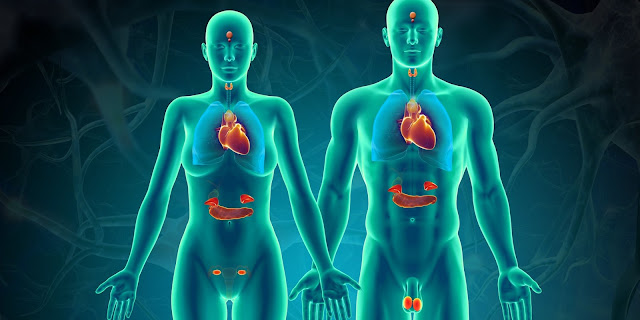Biofeedback Measurement Instrument: Advancing Healthcare with Cutting-Edge Technology
Biofeedback is a technique that uses specially designed medical devices that monitor and provide information about various physiological functions of the human body such as brain waves, heart function, breathing, muscle activity and skin temperature. This feedback is used to help a person gain control over these bodily functions through conscious awareness and reinforcement of desired behaviors and results. In this article, we will look at various biofeedback measurement instruments, how they work and how biofeedback therapy uses them.
EEG Biofeedback Measurement
Electroencephalography or EEG biofeedback uses electrodes placed on the scalp
to measure brain wave patterns. Brain waves are divided into different
frequency bands - delta, theta, alpha, beta and gamma. EEG biofeedback uses
real-time display of brain wave frequencies to train a person to consciously
control and alter their brain waves. This is usually done to treat conditions
like attention deficit hyperactivity disorder, seizure disorders, depression,
anxiety and improve cognition. EEG biofeedback instruments precisely measure
brain wave activity and provide visual, auditory or game-based feedback to
encourage desired brain wave states. By learning to consciously sustain target
brain wave patterns through this feedback, a person can train their brain to
function optimally.
EMG and Skin Conductance Biofeedback
Electromyography or EMG Biofeedback
uses surface electrodes placed over muscles to measure muscle tension levels.
Skin conductance sensors placed on fingers measure sweat gland activity as an
indicator of physiological or emotional arousal. Such instruments are used in
biofeedback to help patients gain voluntary control over muscle tension and
arousal responses linked to stress, pain and other disorders. For example, in
treatment of headaches, EMG biofeedback helps relax tense head and neck
muscles. By getting real-time feedback on muscle activity levels, patients
unconsciously learn to relax muscles even under stressful conditions over
multiple therapy sessions. This trains the body and brain to respond
differently to stressors or pain triggers.
Heart Rate Variability Biofeedback
Heart rate variability or HRV biofeedback utilizes finger sensors or chest
straps connected to monitoring devices to measure small variations in time
intervals between heartbeats. These heartbeat variations are influenced by
breathing patterns and autonomic nervous system responses. By tracking HRV
parameters, it provides an indirect measure of balance between sympathetic and
parasympathetic nervous system activity. Specialized HRV biofeedback
instruments display feedback on respiration patterns or heart rhythms to guide
patients into a more relaxed physiological state linked to higher HRV. This
technique is used to aid stress management and treat conditions where stress
plays a role like hypertension, anxiety and chronic pain.
Thermal Biofeedback
Thermal biofeedback utilizes thermistors or thermocouples placed on fingers to
measure skin temperature variations. Small changes in peripheral skin
temperature are linked to activation of the sympathetic nervous system during
stress and relaxation responses of the parasymphatic nervous system. Thermal
biofeedback instruments plot skin temperature changes allowing patients to view
temperature rise or fall in real-time. By consciously adjusting thoughts,
breathing or muscle tension patients learn to generate a warm thermal response
linked to deep relaxation over sessions. This trains voluntary control over
automatic physiology to relieve muscle tension, pain and manage stress
thermally.
Feedback Modalities and Usage of Biofeedback
Different types of biofeedback provide feedback using visual, auditory or
tactile stimulation depending on the instrument and target physiology. Common
visual feedback includes computer graphs, thermometers and game environments
showing physiological parameters like rising or falling bars, lights or sounds.
Auditory feedback includes tones changing in pitch based on measurements like
volume of exhaled air or heart rate. Tactile feedback may stimulate a muscles
with vibrations proportional to its tension levels during EMG biofeedback.
Biofeedback therapy usually involves 8-12 sessions combining various feedback
modalities for best results. Patients learn to recognize bodily cues linked to
target symptoms. By altering thoughts, breathing or muscle activity and correlating
changes to feedback provided, they gain conscious control over unconscious
physiology involved in issues like chronic pain, stress, incontinence or
headaches. The skills acquired during therapy sessions help control target
symptoms through self-regulation without ongoing biofeedback. Its neural
retraining effects also aid reducing reliance on medications over time for many
issues.
In conclusion, biofeedback measurement instruments precisely monitor different
physiological processes and provide real-time feedback on parameters like brain
waves, muscle tension, heart rate, breathing, skin temperature and more. By
correlating changes to this feedback during multiple therapy sessions,
biofeedback helps patients gain conscious voluntary control over automatic
nervous system responses that play a role in numerous issues. Its non-invasive
neural retraining effects through feedback-guided self-regulation have proven
successful as an adjunct or alternative treatment approach for several medical and
psychological conditions.
Get more insights on Biofeedback
Measurement




Comments
Post a Comment